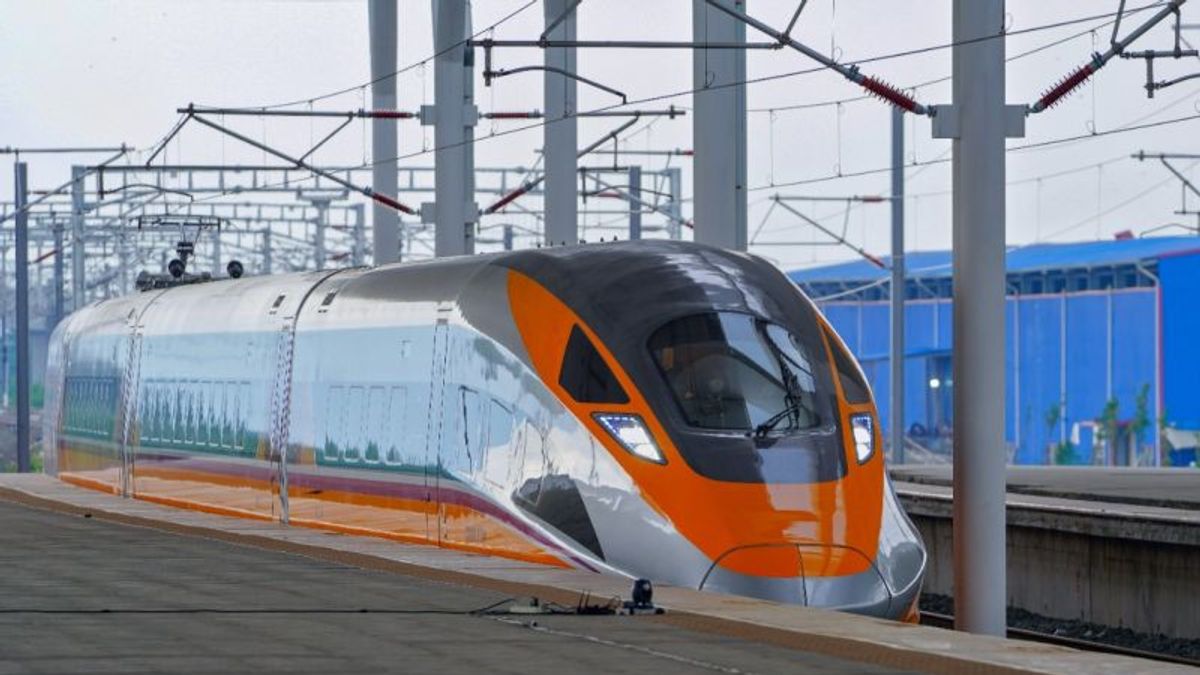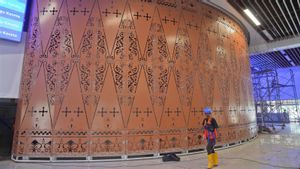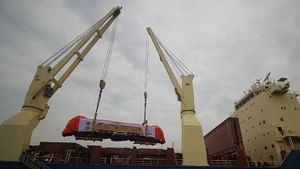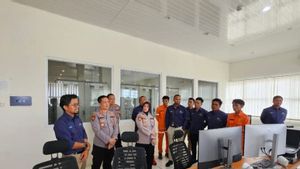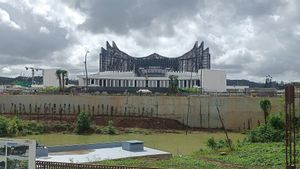JAKARTA - PT Kereta Cepat Indonesia China (KCIC) conducted socialization to the public not to play kites near the Jakarta Bandung High Speed Rail (KCJB).
This socialization aims to make the public understand the dangers of kite rope to train operations.
As is known, the Fast Train will operate commercially in October. Meanwhile, from August to early October, soft launching will be carried out or limited operations.
General Manager of KCIC Corporate Secretary Eva Chairunisa said, even though along the fast train line he had been given a fence and barbed wire, the public was still asked to participate in maintaining the facilities and infrastructure, which are the National Strategic Projects.
The fast train line itself stretches from Halim to Tegalluar along 142.3 kilometers (km) both in subgrade, elevated, tunnel, and bridge.
For operations, said Eva, the fast train line is flowed by electricity of 27.5 KV which will be the driving source through the pantograph media located at the top of the train. The pantograph will be connected to the Upper Electricity Network (LAA) or the Overhead Catenary System (OCS).
When operating later, KCJB has a very high speed of up to 350 km per hour. So, it is necessary to avoid foreign objects that have the potential to interfere and carry out operations.
"The higher the speed of Fast Train, the greater the need for smooth transportation between pantographs and LAA," Eva said, in an official statement, Sunday, July 23.
Eva said foreign objects in LAA can be categorized based on the type of material into spinning objects and insulators. Distorting objects include materials such as tin paper and kite ropes containing metal wires.
These objects, continued Eva, when they depend on the power line, can easily cause short circuits and circuit breaks.
"Insulator objects such as plastic cloth and kites, when exposed to strong winds, are very easily entangled in LAA and cause damage to pantographs," he explained.
Eva explained that in mild cases, if there is a disturbance from a foreign object the pantograph can be damaged and the Fast Train stops. Meanwhile, in more serious cases, it can cause LAA cable cuts and power outages, which could disrupt the entire fast train travel operation.
Incidents That Occur During Testing
Eva said that since the Jakarta-Bandung Fast Train testing, there have been several incidents of foreign objects depending on the LAA.
This incident mainly occurred in the area between Padalarang Station and Tegalluar Station, where many people were playing kites near the fast train line.
As a result, continued Eva, there were a number of incidents of kites trapped in LAA that interfered with the testing process for the Jakarta-Bandung High Speed Train.
"As a precautionary measure, socialization is carried out so that the route remains sterile. People are advised not to do a number of things that have the potential to endanger safety and security together, one of which is to not play kites for residents who live around the train line," he said.
Eva said that yarn and kites have the potential to disrupt electricity if they are caught in part of the LAA network.
In addition, the public is also asked not to enter the Fast Train route by passing through the guardrail because it is very dangerous.
"Socialization is carried out in various ways starting directly from visiting residential areas and installing socialization materials in the form of posters or banners related to a number of things that can endanger the speed train journey and the community," he said.
另请阅读:
Eva said, to realize safety and security together, around 500 TNI and Polri personnel helped carry out socialization to communities in a number of areas. KCIC really appreciates the collaboration of the TNI-Polri who have participated in trying to provide understanding to all levels of society.
"Through the socialization carried out, it is hoped that the entire community can play an active role in maintaining the safety of themselves and others around the Fast Train route," concluded Eva.
The English, Chinese, Japanese, Arabic, and French versions are automatically generated by the AI. So there may still be inaccuracies in translating, please always see Indonesian as our main language. (system supported by DigitalSiber.id)
